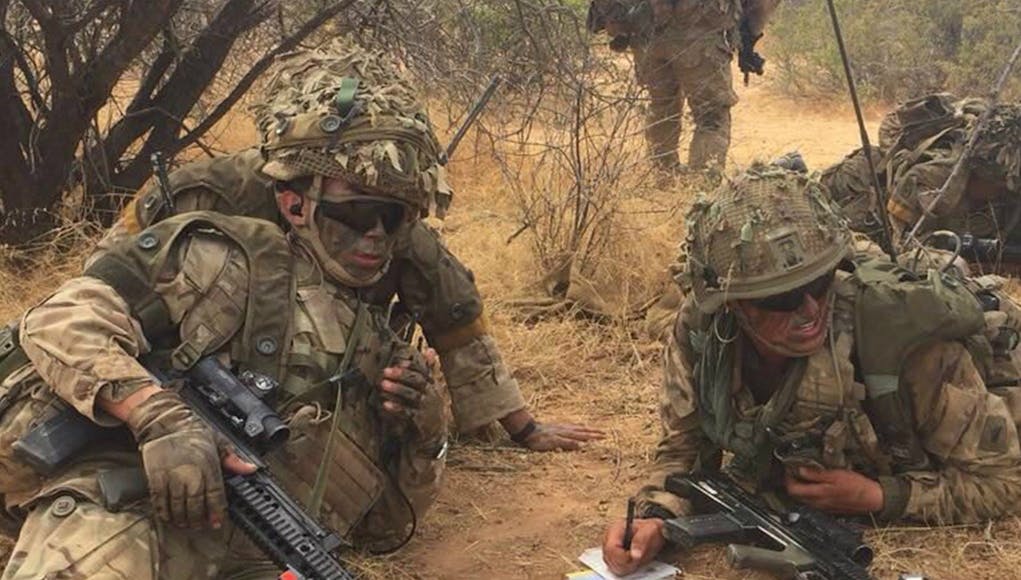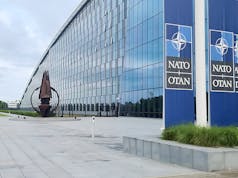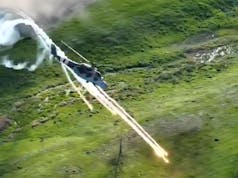1 Royal Gurkha Rifles have conducted Exercise Askari Storm in Kenya. The Battlegroup consisted of 1 RGR and E Company, 15th Kenyan Rifles from the Kenya Defence Force plus attachments from across 16 Air Assault Brigade.
According to the British Army, the exercise was divided into four tactical phases.
Phase 1 (Warrior): The Companies carried out live firing up to Platoon level night and day as well as Company level blank fire training. This phase was a chance for junior commanders to develop their Platoon level skills, particularly with use of night fighting equipment and thermal sights.
Phase 2 (Centurion): This consisted of 3 Company group battle exercises. Each exercise lasted 36 hours. First was the Enabling Lane, delivering humanitarian aid to a village as well as seizing an enemy held airfield.
The second rotation saw the Companies establish a defensive position to protect a bridge. Finally, the Companies went through the Combined Arms Live Fire Exercise, which was supported by 105mm Light Guns from G Battery 7RHA and 1 RGR’s Mortar Platoon.
B (Sair Bair) Coy again broke the British Army Training Unit Kenya record by clearing their positions on the second day in only 43 minutes.
Phase 3 (Marauder): Marauder was the first opportunity for the troops to operate as a full battlegroup, and was a rehearsal for the fourth phase. This included an attack and obstacle crossing at night.
Phase 4 (Spartan): The Final Exercise. This was conducted as a full battlegroup, which included an Advance-to-Contact, Deliberate Attacks, and Defensive Operations. The battlegroup really excelled in the defensive phase, dominating the tough terrain around the defensive positions.
The release concluded:
“The Kenyan training areas provide many difficulties, all of which created a realistic environment for expeditionary operations including, flash floods, which can wash away vehicles, difficult terrain, which affected vehicles, equipment and the soldiers, long lines of resupply and communication, local tribal conflicts, as well as risks from malaria, heat and wildlife.”














Can we have more units of Gurkhas please. We have a manpower crisis and the demand for 200 odd Gurkha places a year is huge.
Re-raise the 3 RGR thats what i say
We could easily have 10% of our army Gurkhas. The army would be a bit bigger and a lot tougher.
We could recruit a new battalion every year for the next five years no problem! Ridiculous that we continue to ignore this waste of manpower. Superb troops!
I wonder if the legacy pension controversy has anything to do with it. Shouldn’t though
I think the cost of raising a battalion of Gurkhas is probably the same as it would be for any other battalion now. The only advantage is the (excellent) quality, availability and eagerness of potential recruits. I have been in Pokhara during Gurkha recruitment for the Indian army and it is a sight to behold.
Gurkhas #respect
Many of the cruise liners employ former Gurkhas as security. No one messes and plenty of people stop to take selfies.
Afternoon
More Gurkhas sounds great, however to give a bit of balance we cannot be seen to be taking hard working men out of a country to make our own stronger.
More joint working with the Nepalese, more innovative ways to get Gurkas through the U.K. system and back into their system so they can utilise the skills and experience we give them to better enrich and strengthen their own country.
A proud people, a great country, let’s help them help us.
The challenge is to make sure we keep the flow of our own young men and women into the system, not delayed by poor recruitment systems that take up to 300 days to get someone into the Army. We don’t have a shortage of volunteers, but why wait for nearly a year when there are lots of jobs out there, ready to be taken
My grandfather fought with the Gurkhas in Burma. We still have his kukri. God bless him.